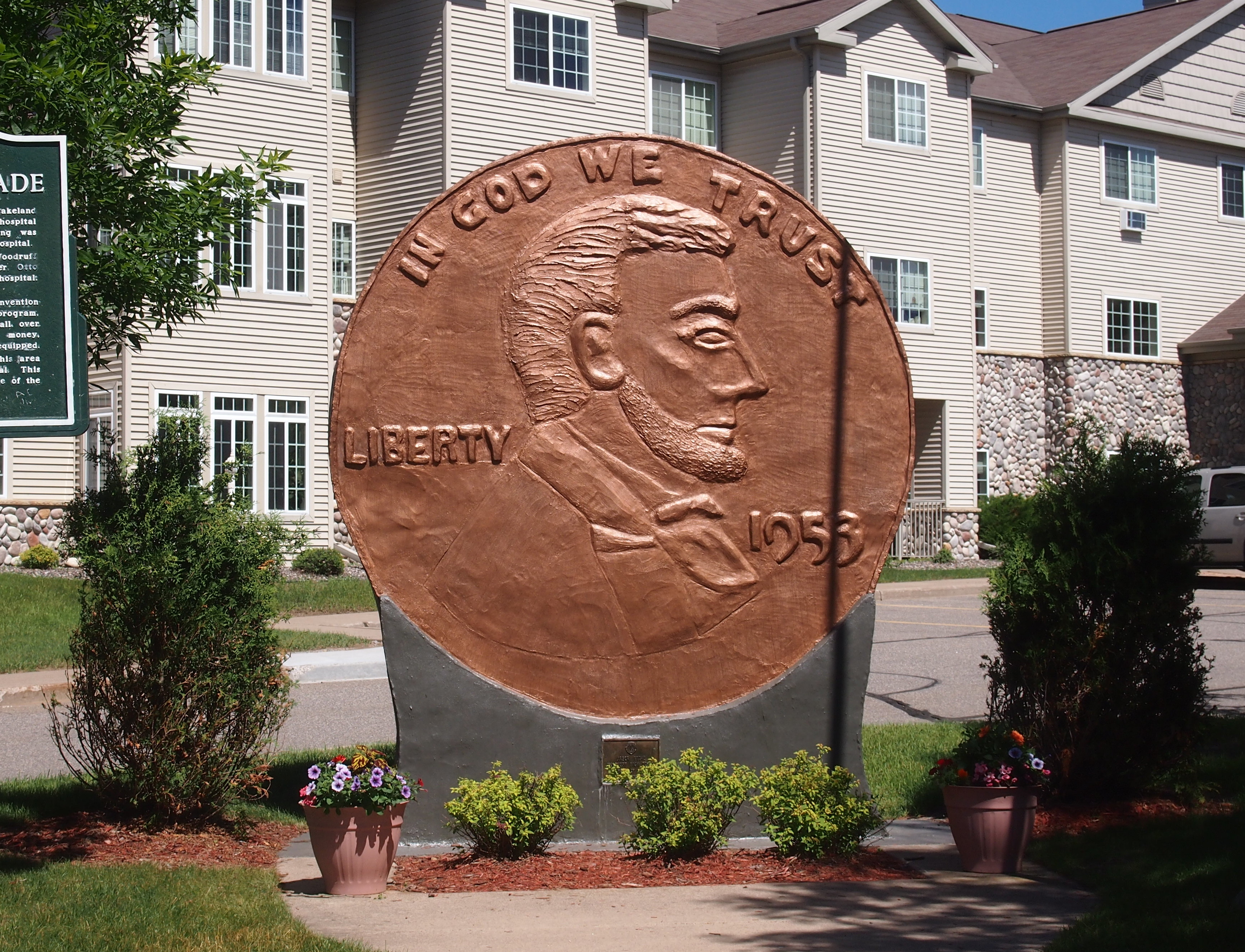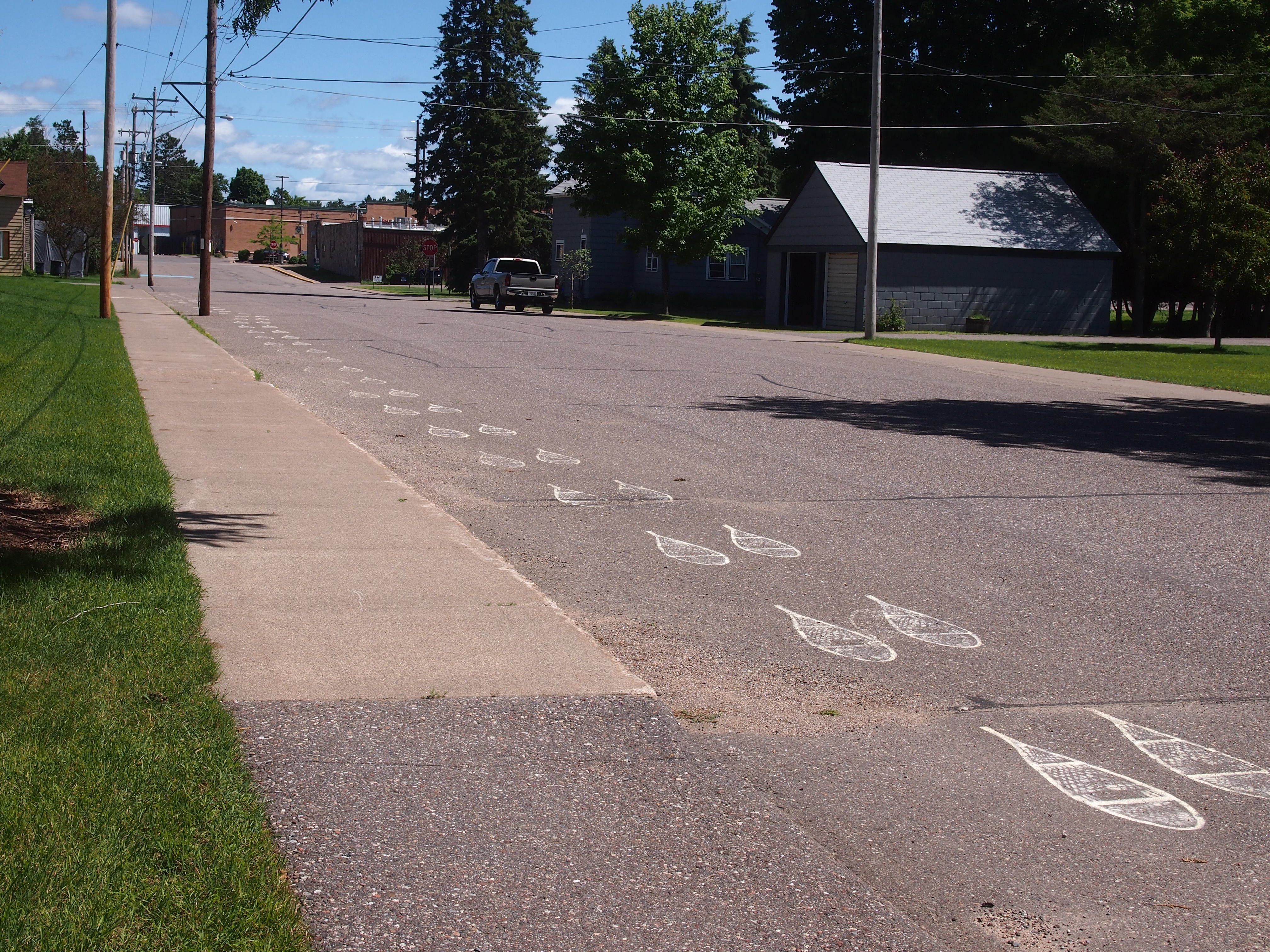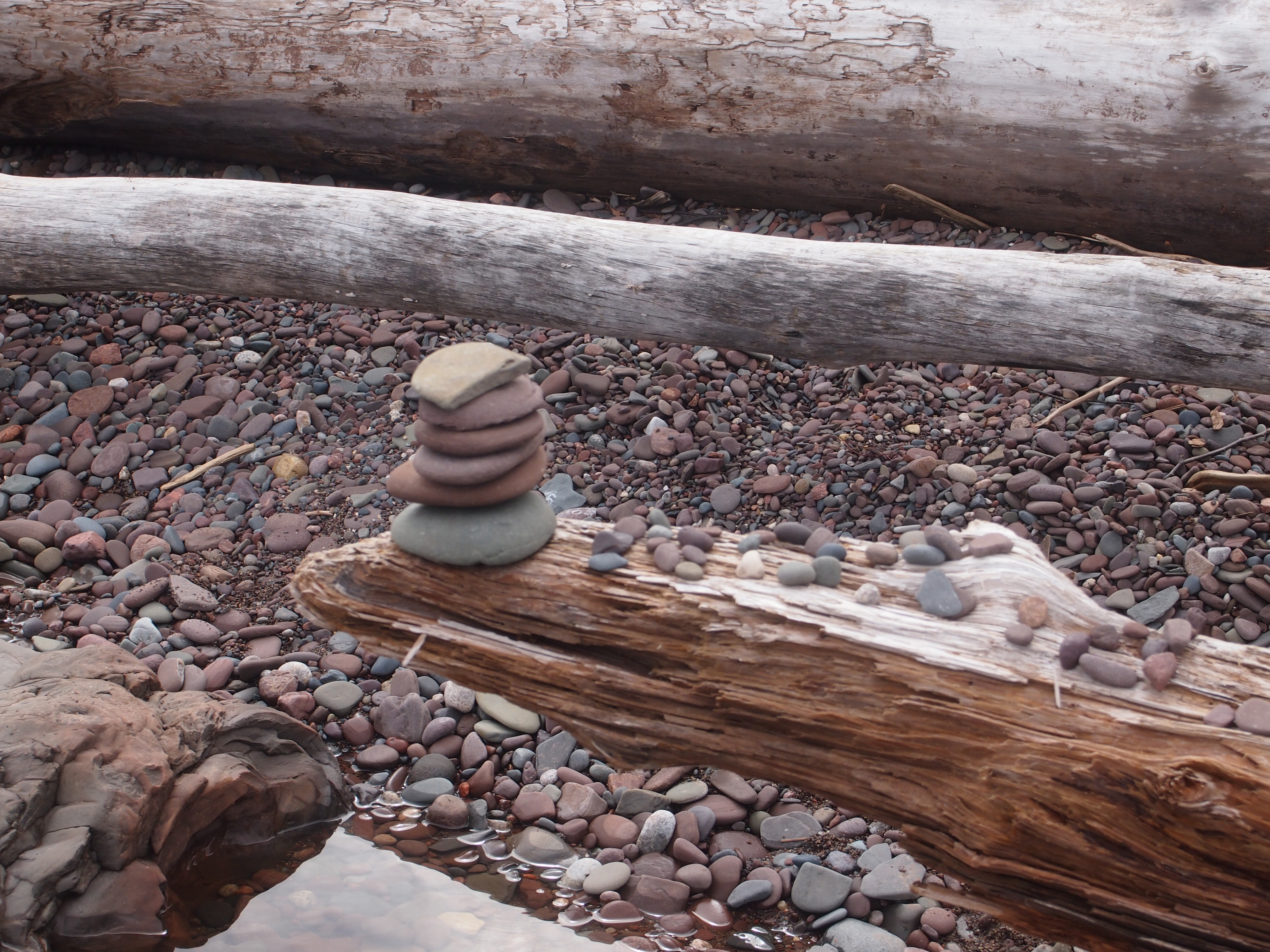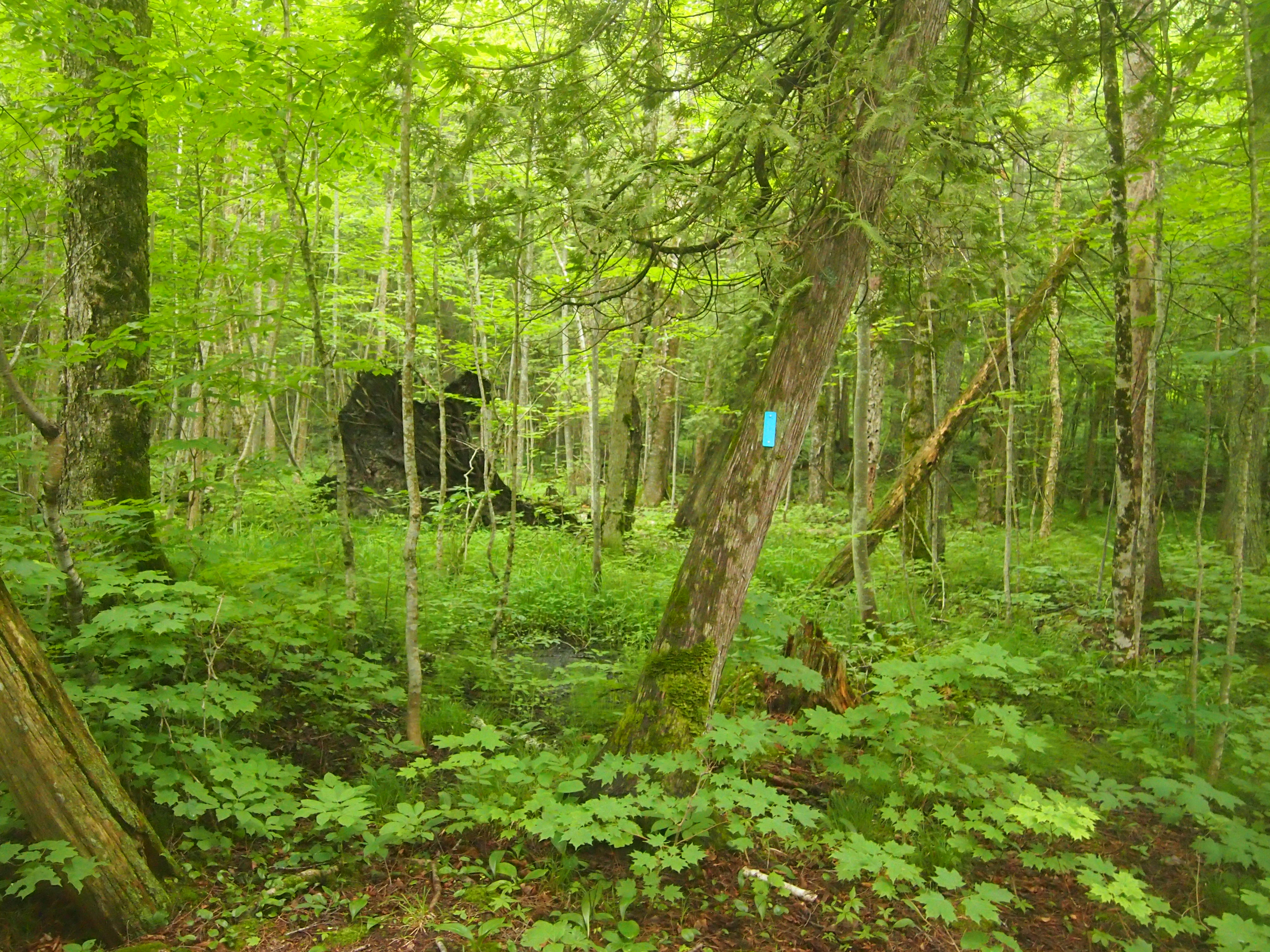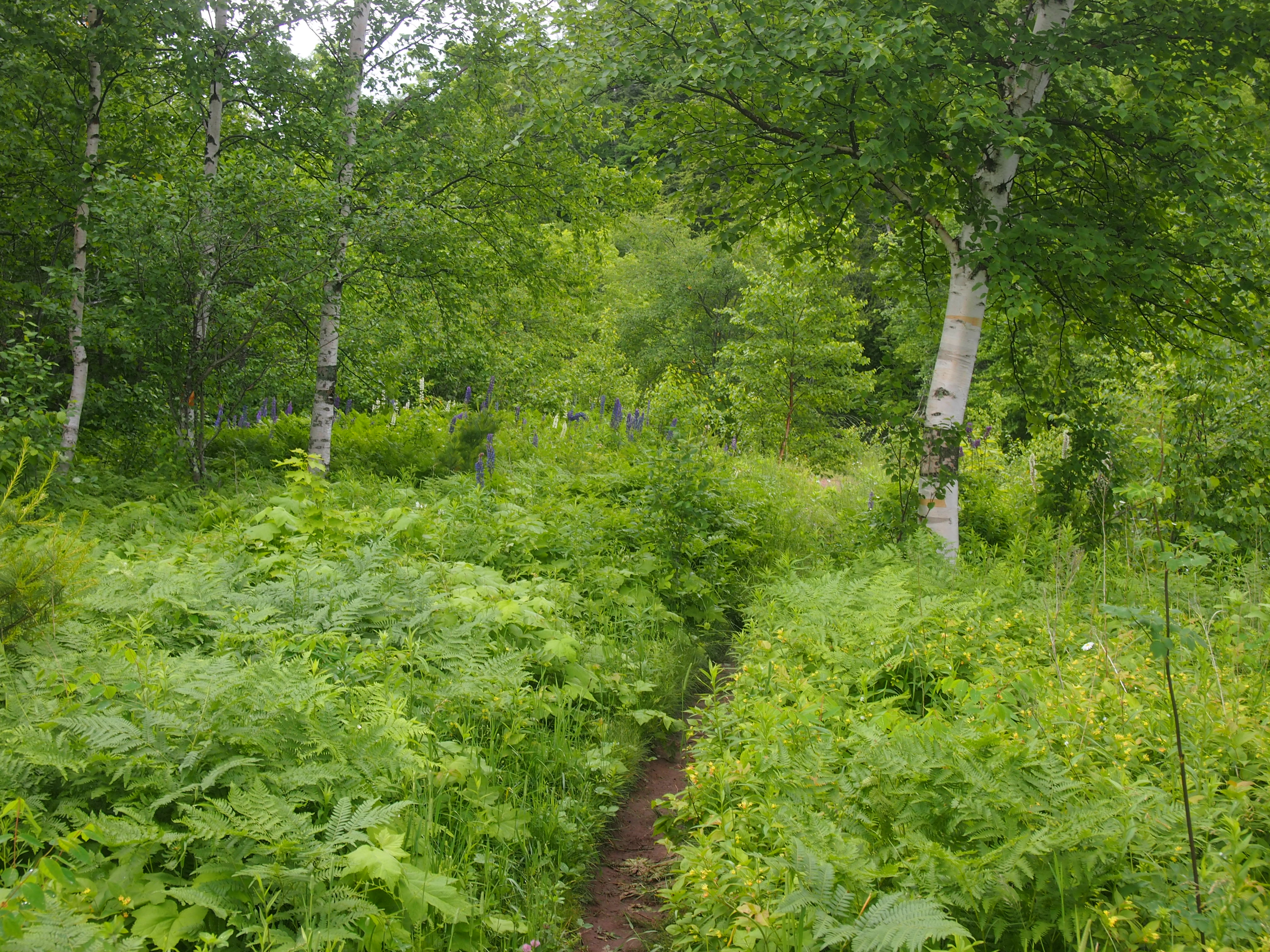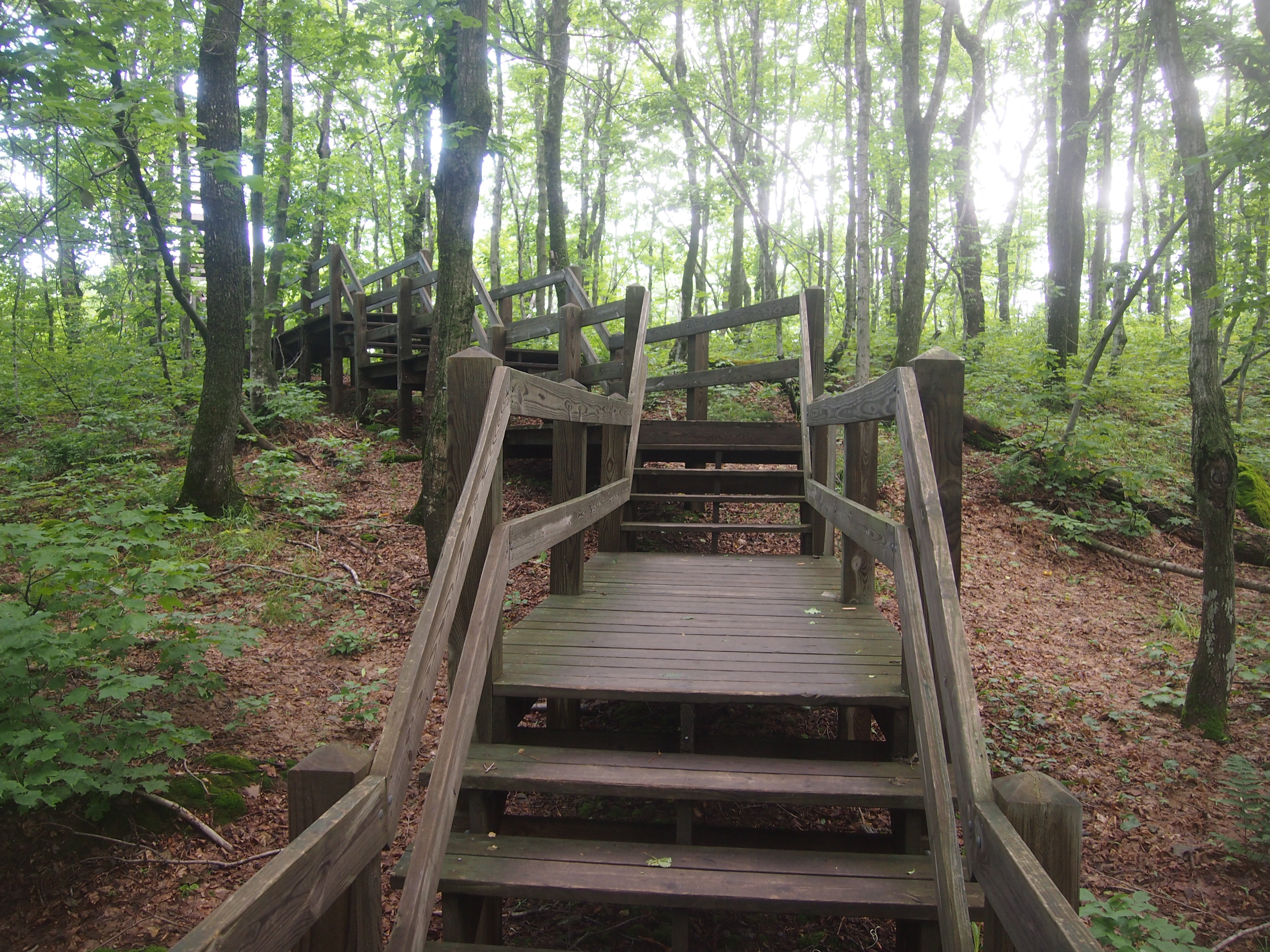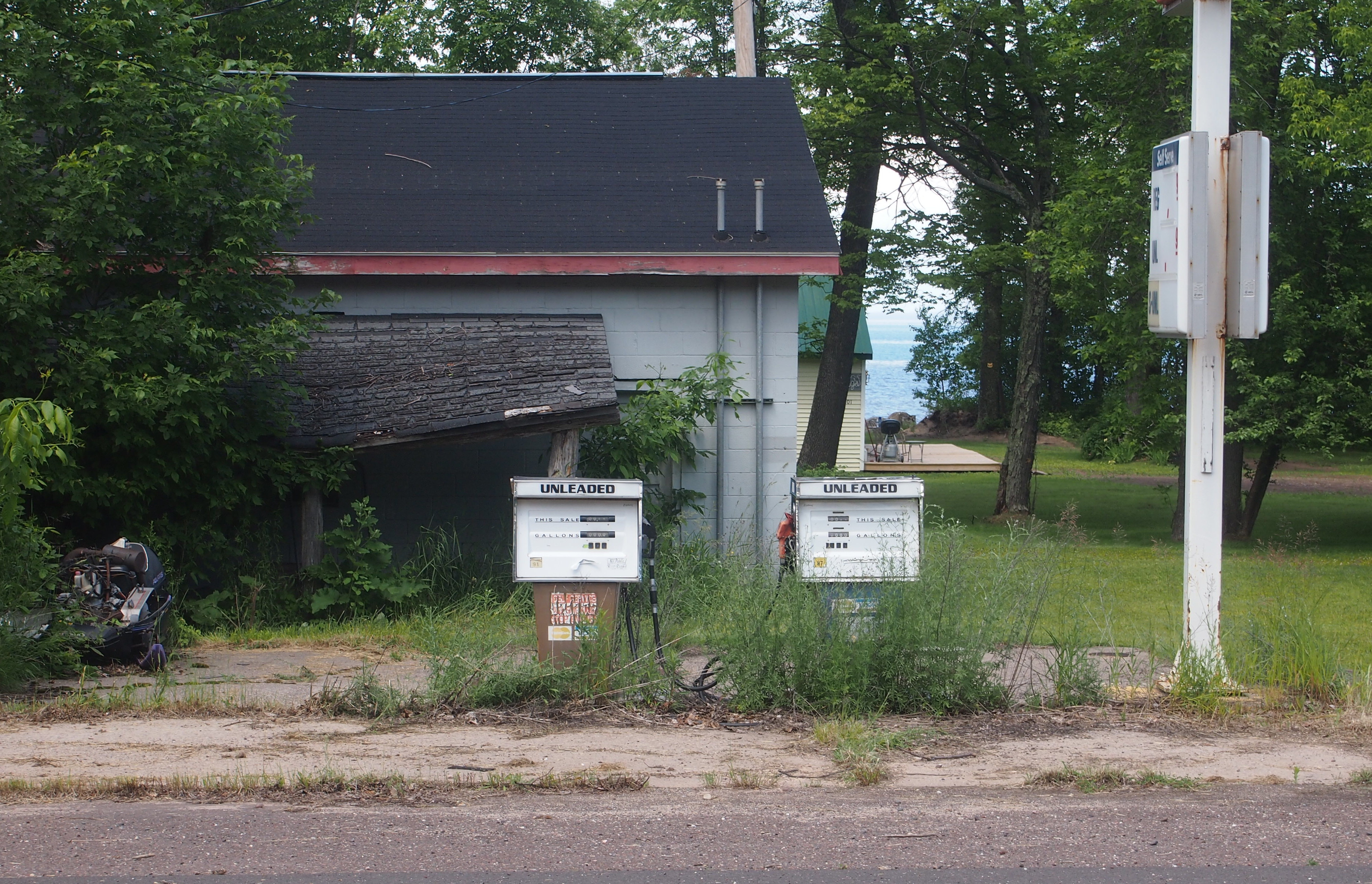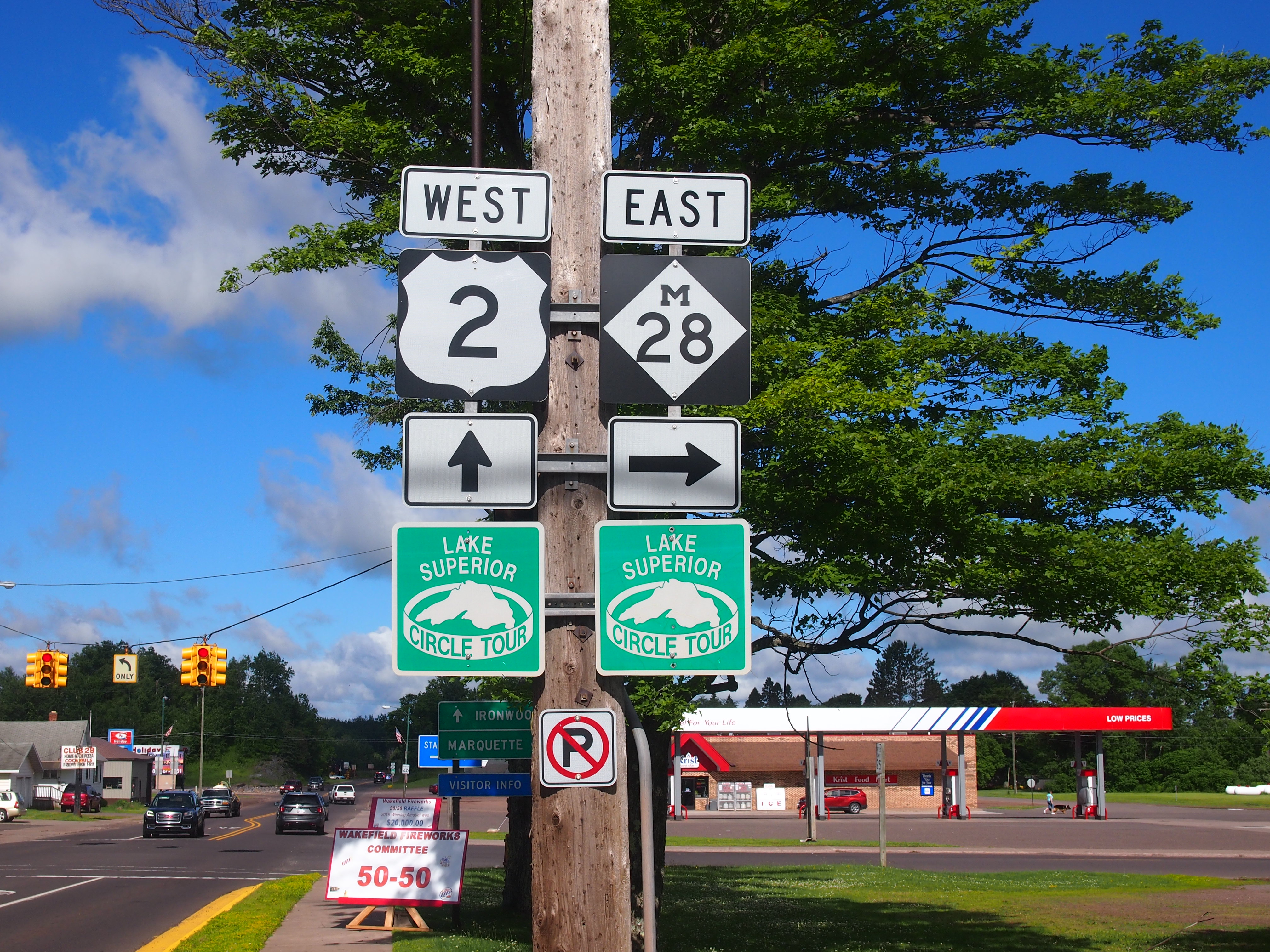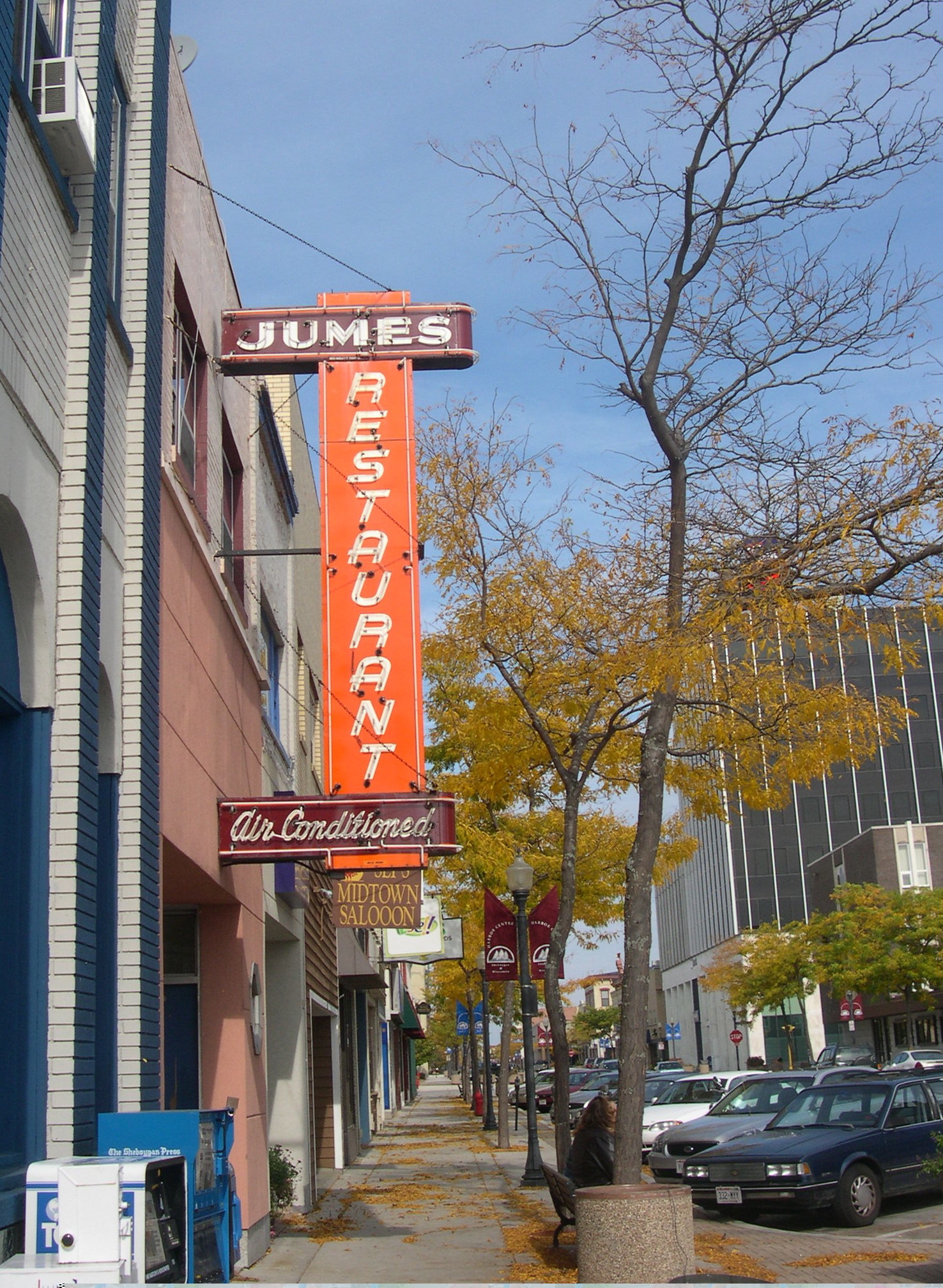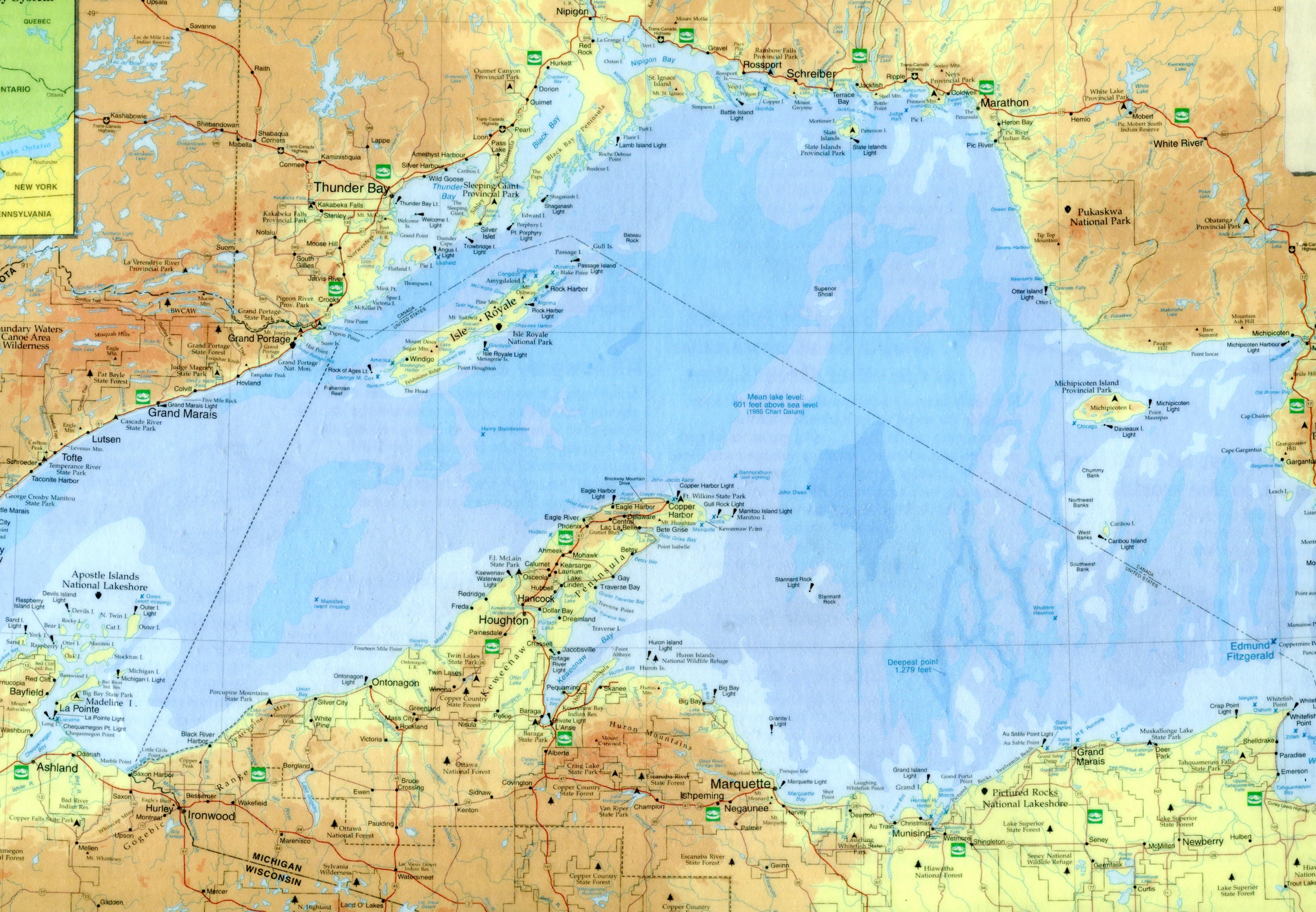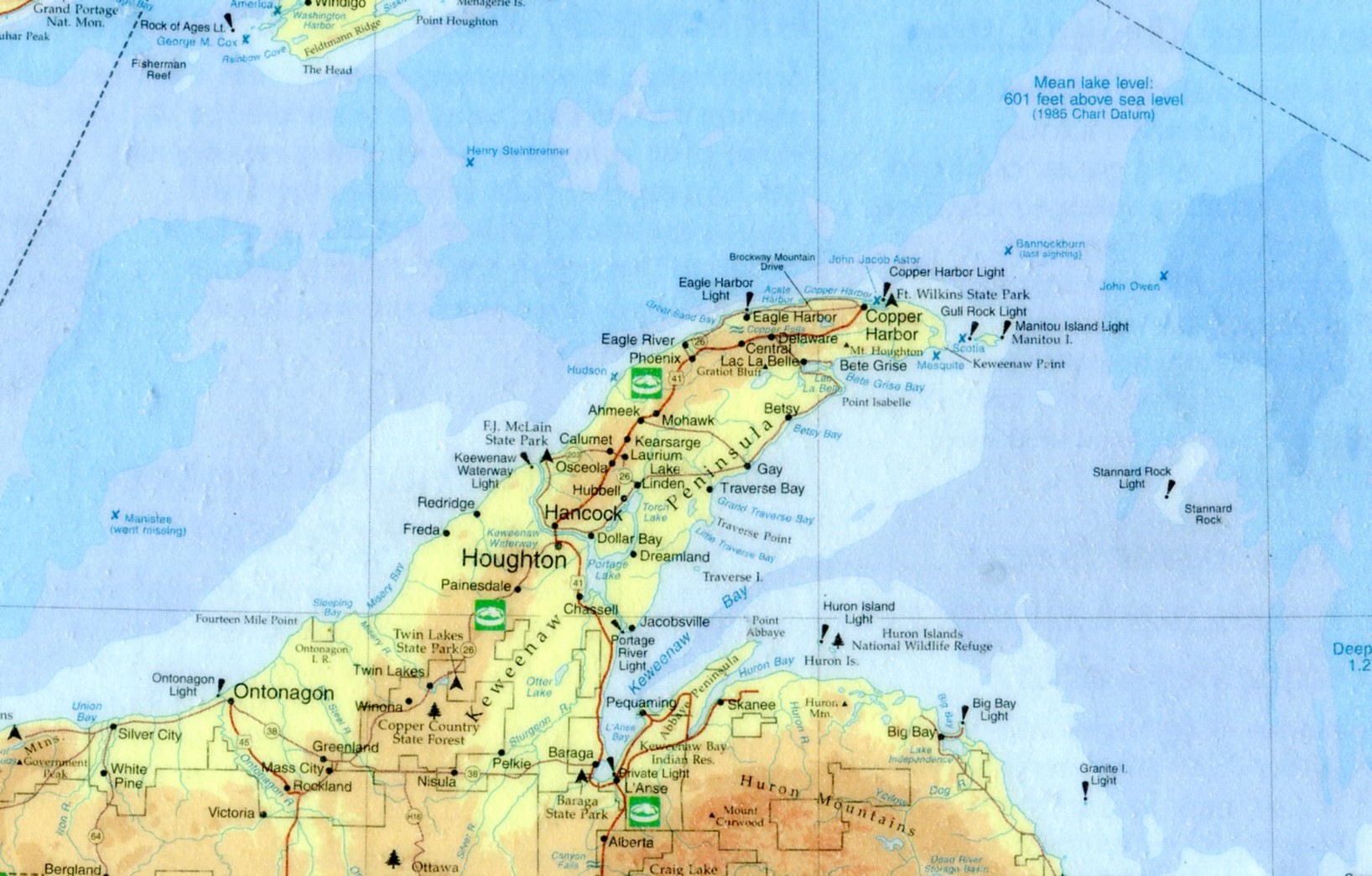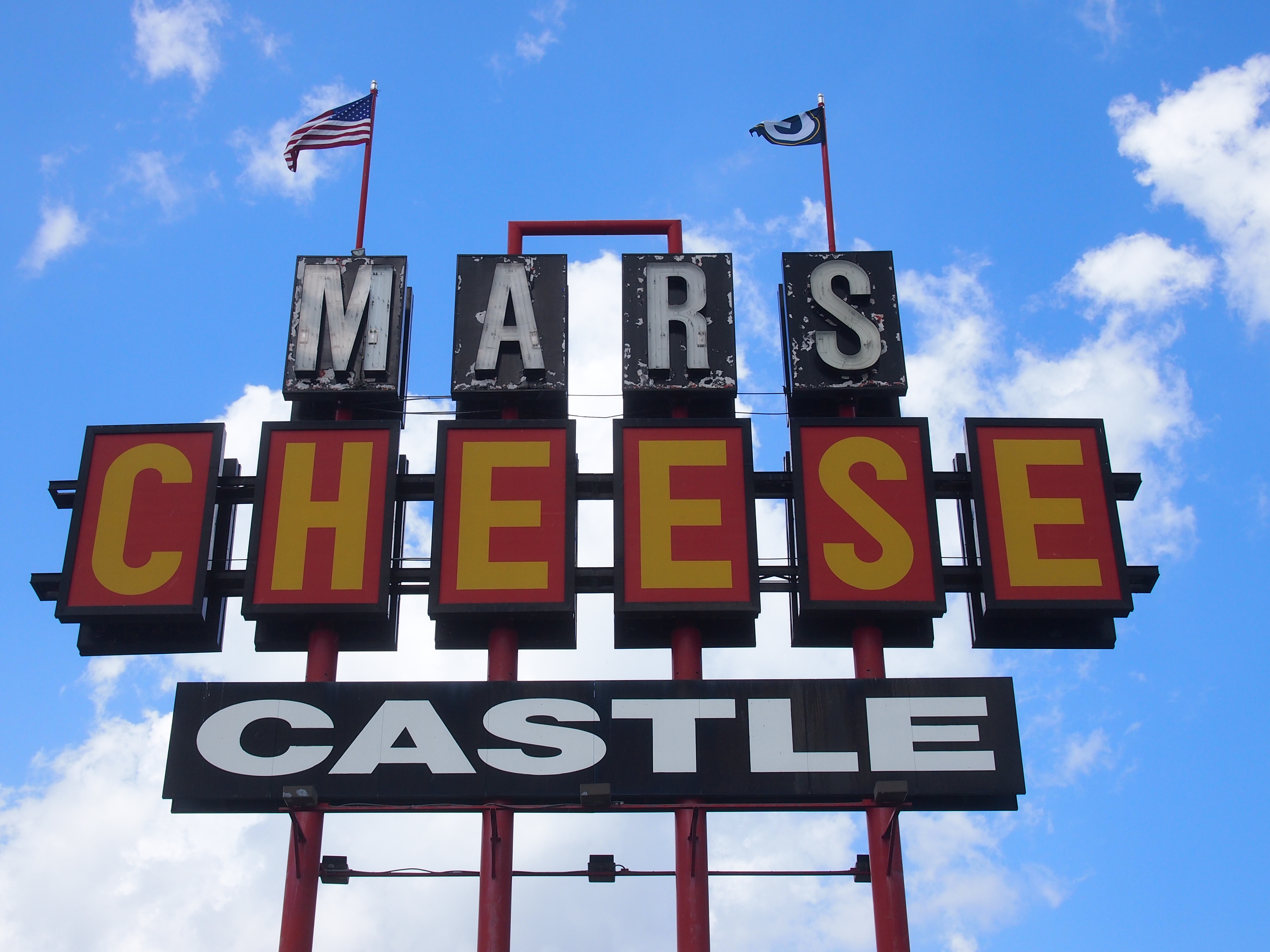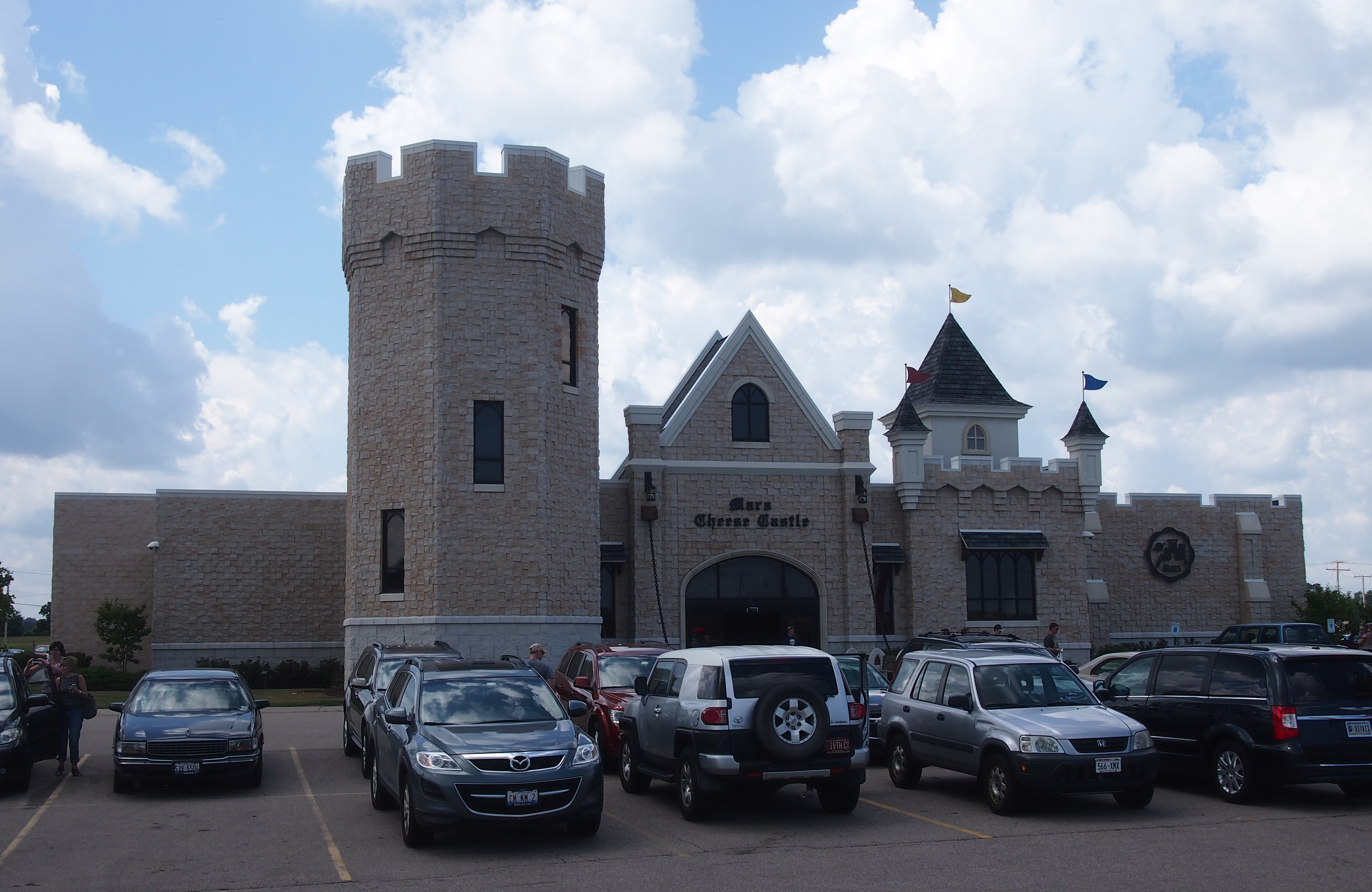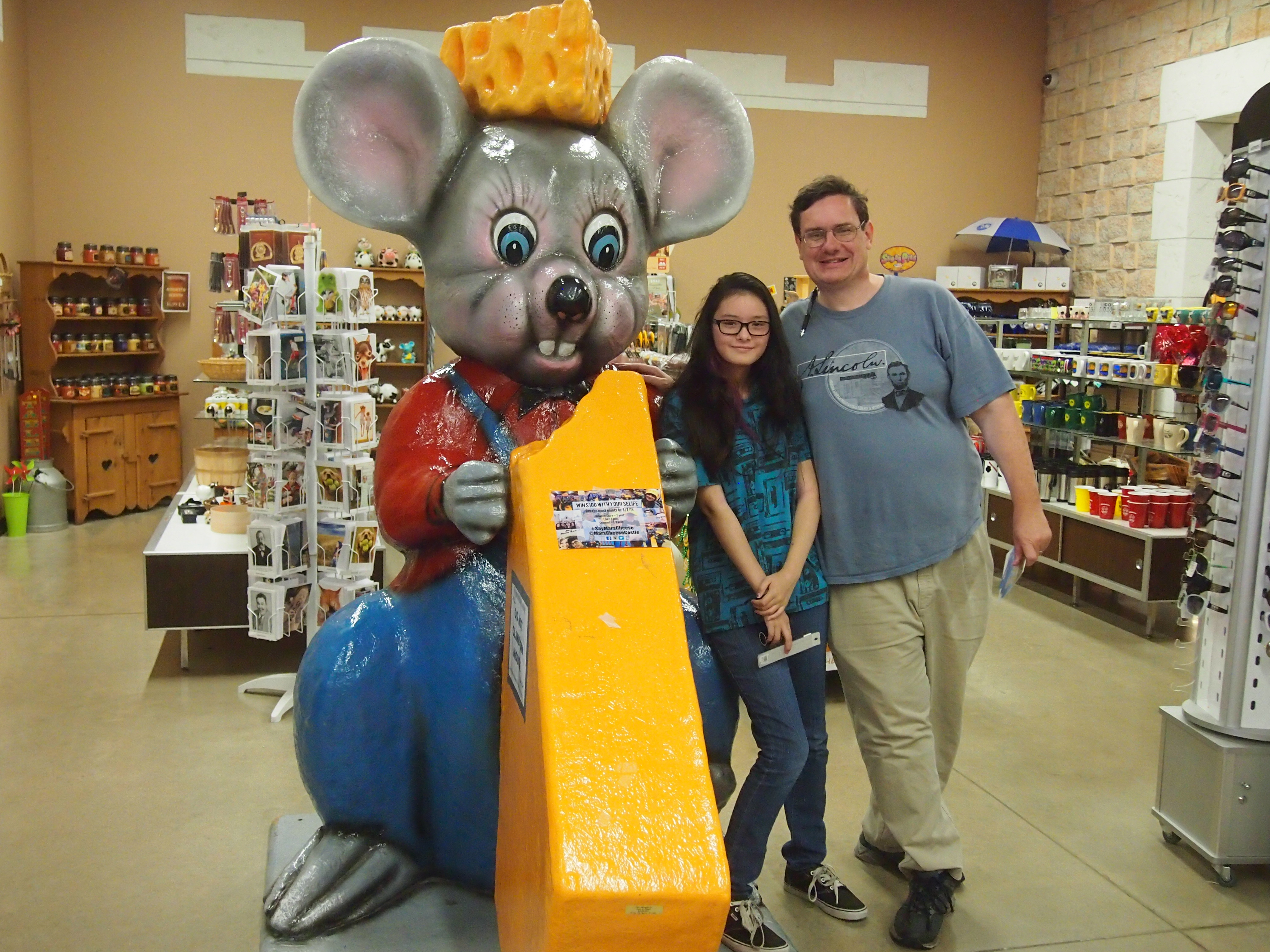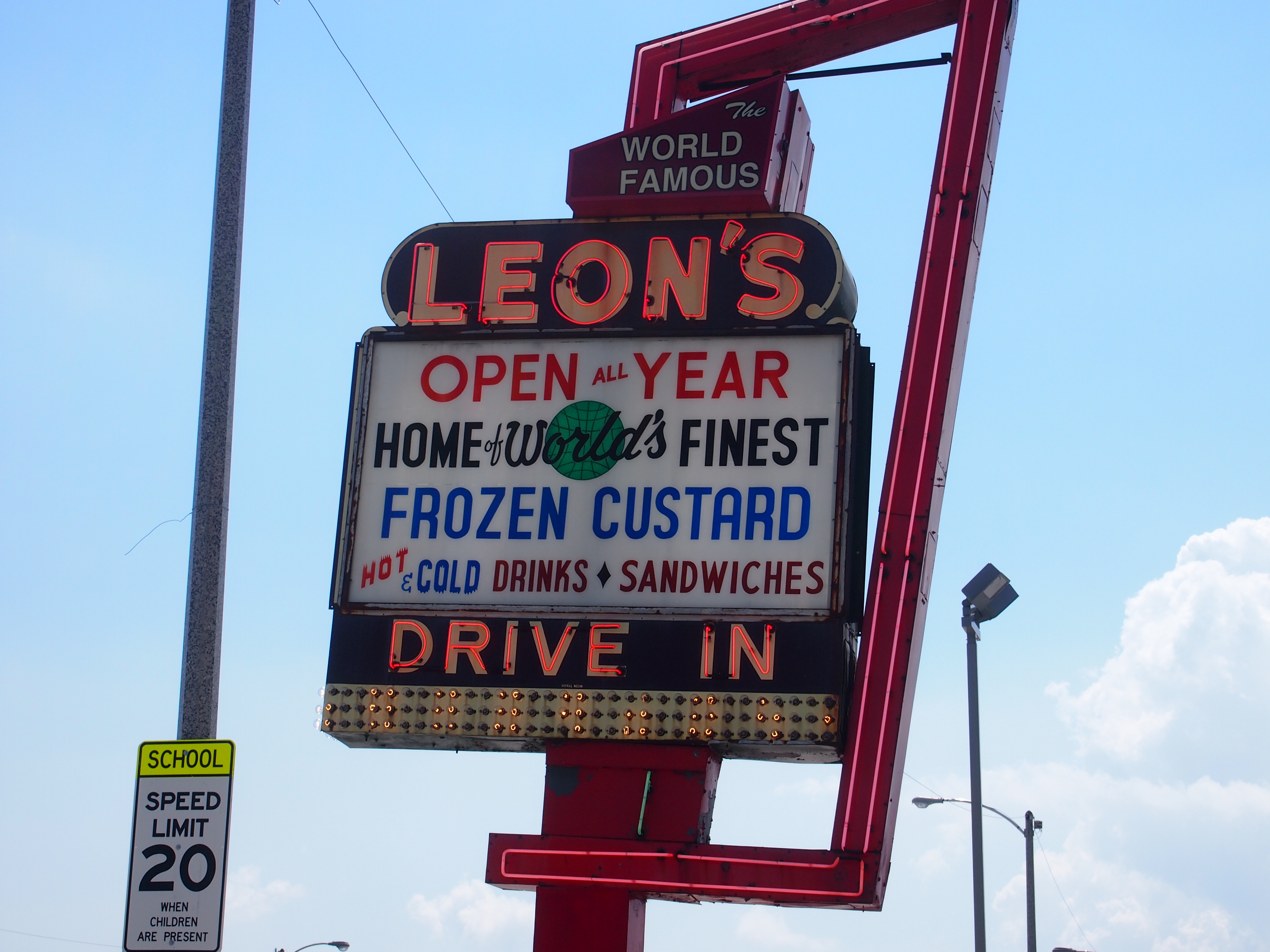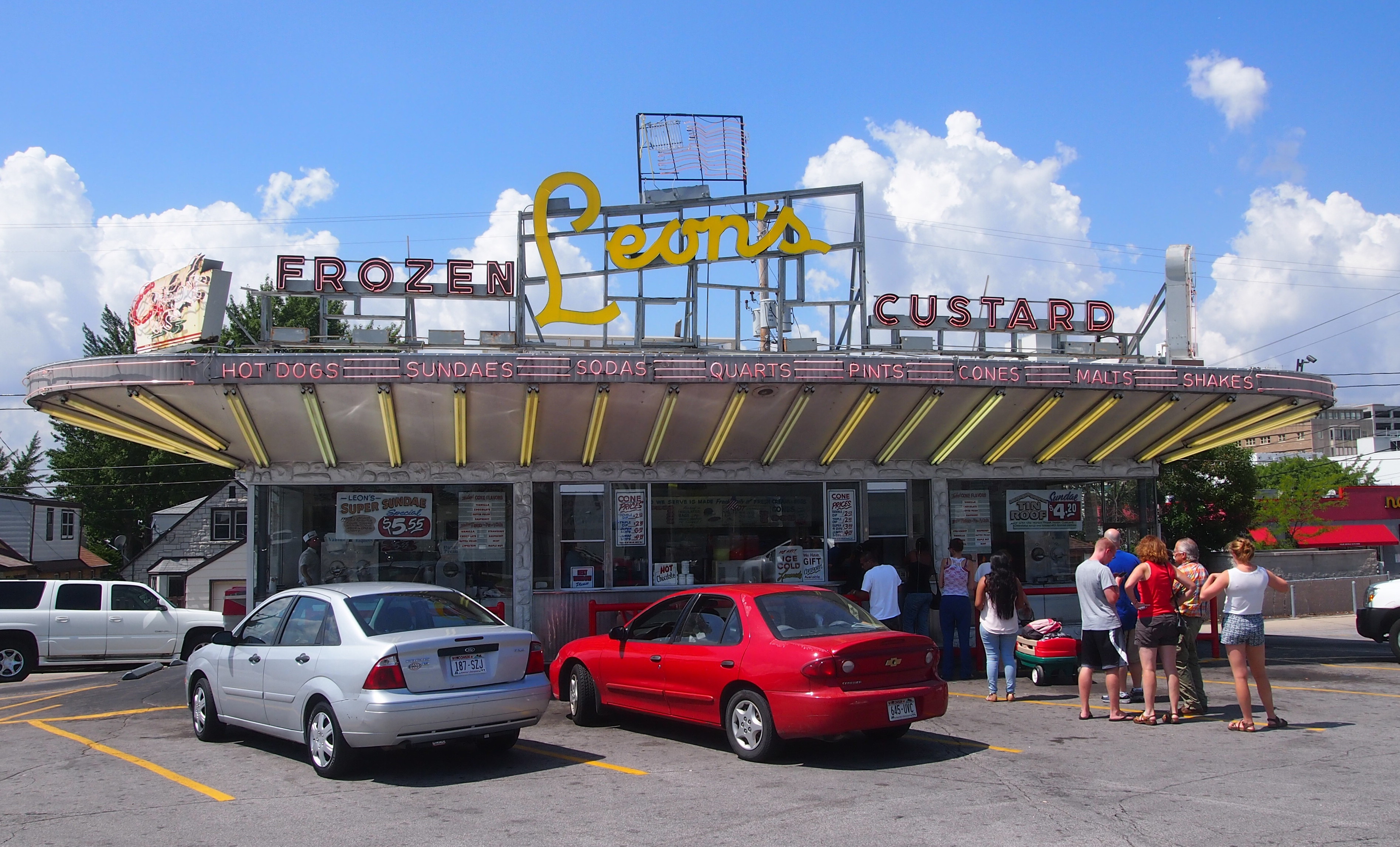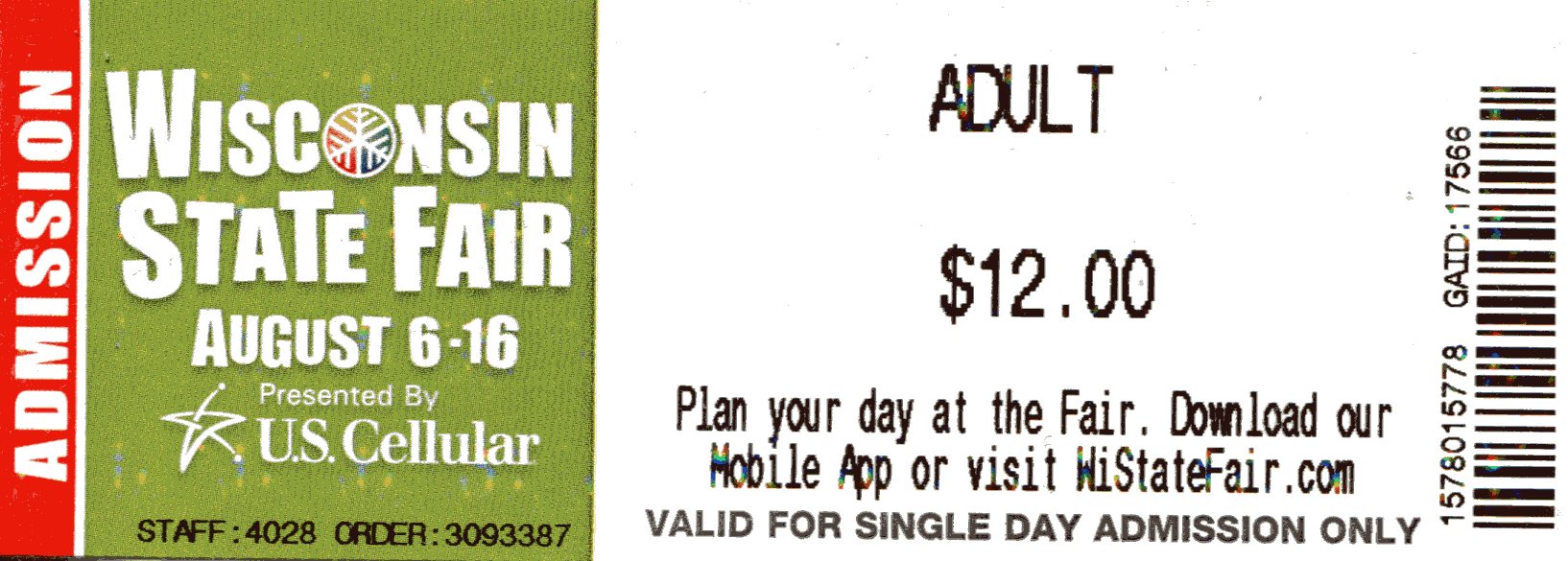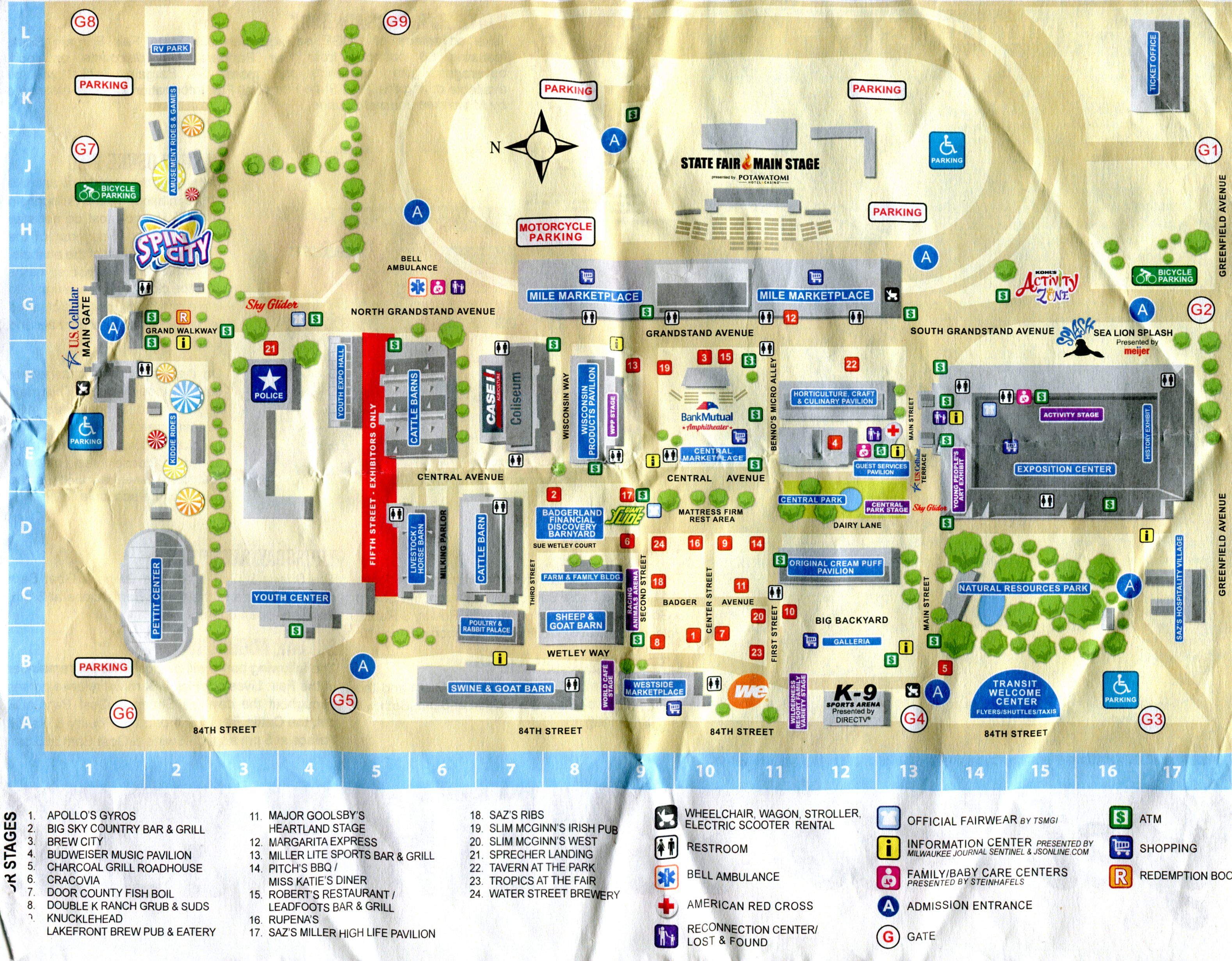Wausau, Wisconsin, has a pleasant town square, a park surrounded by an assortment of shops and restaurants. No one but me remembered visiting there before, but we did in 2003, taking lunch at the Mint Cafe on the square. This year we went back to the cafe on the way up to the UP, on the last day of June. I think we even sat in the same booth.
The top card is from our ’03 visit. The bottom, from the recent visit. I like the ’03 card better. Less busy.
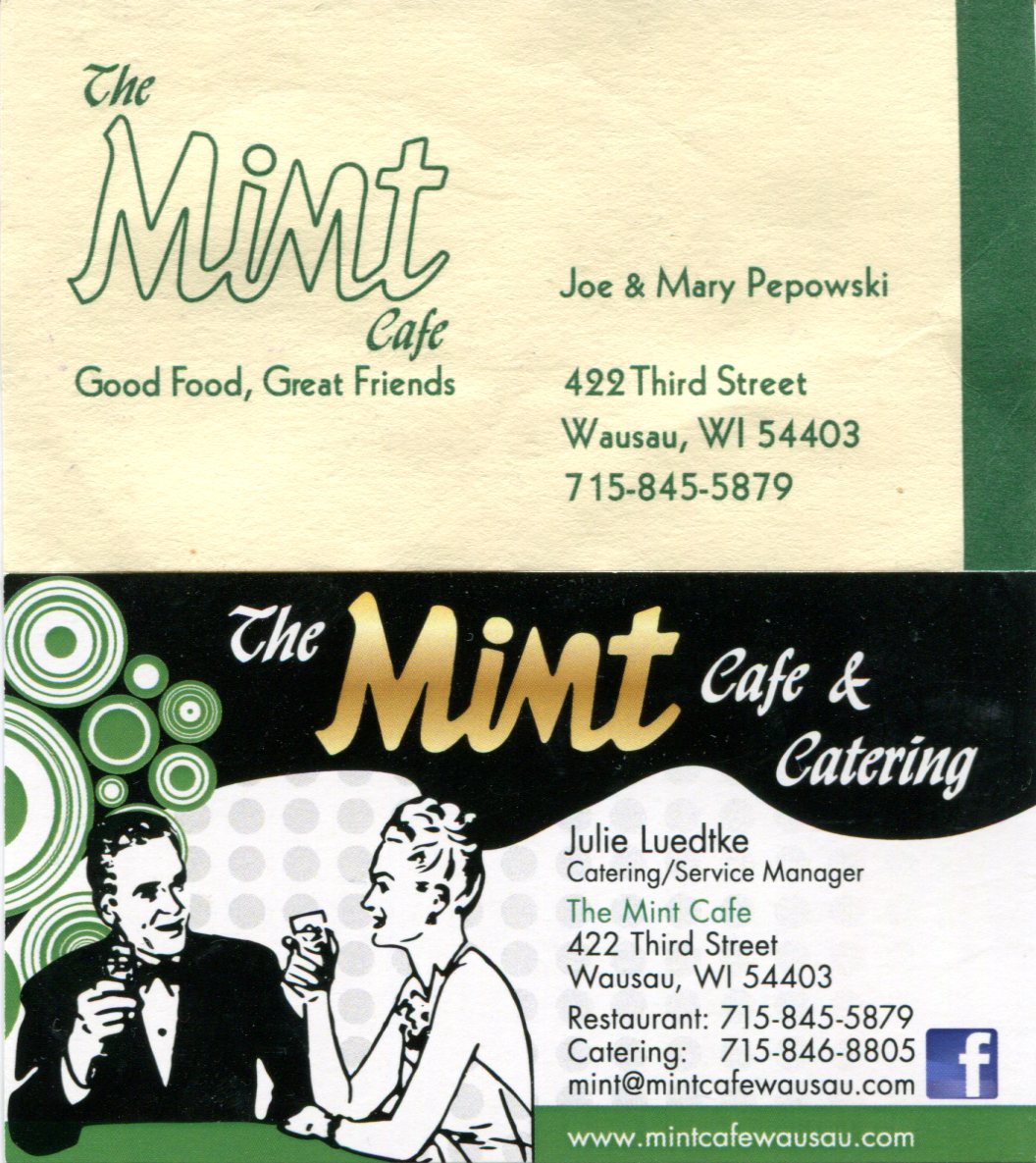 Lunch was just as good this time around. Hamburgers, fish, that kind of thing, in a uncontrived diner atmosphere. No one at the Mint was wearing a tux, as far as I could see.
Lunch was just as good this time around. Hamburgers, fish, that kind of thing, in a uncontrived diner atmosphere. No one at the Mint was wearing a tux, as far as I could see.
Afterward we strolled around the square and a nearby street or two. We happened on the office of the Wausau/Central Wisconsin Convention & Visitors Bureau. Mostly we went in to use the restroom, but I also picked up a four-color glossy promo magazine suitably called Wausau, subtitled “Central Wisconsin.” On the off chance that it offered useful information. It did.
The magazine reminded me that not far from Wausau is a sign marking 45°N latitude, 90°W longitude. Or, as the magazine puts it, “Center of the North Half of the Western Hemisphere.” Also included: a nicely detailed map to help you get to that place (and other points of interest).
I learned about the location years ago. I think in high school, or even in junior high, I wondered where those four points on the Earth might be. So I got out the atlas and looked. Two were in remote southern oceans. One was in the absolute middle of nowhere in central Asia. And one was… in Wisconsin.
Years later, a coworker of mine originally from Wisconsin told me about the site — he’d grown up not too far away. And then I read about it, probably on Roadside America. Even so, I would have forgotten to visit on this trip had the magazine not reminded me. I was inspired. If we can stand on the Prime Meridian and Lilly can stand on the Equator, then by gar, we can stand at 45°N, 90°W.
So on July 2, after lunch again in Wausau on the way home — this time at a sandwich shop, part of a small local chain — we headed west on I-29 out of Wausau. The map’s directions are clear. I-29 west to Exit 150, then take Wisconsin H north to Wisconsin U, turn west. Follow U as it curves north and then curves west again. A sign marking 45°N, 90°W will be just past the second curve.
So we followed the directions. Got to the second curve. And then: nothing. No easily visible sign anyway. I’d had a somewhat hard time explaining to the rest of my family what we were doing out in the farm fields of central Wisconsin, when we could have been heading home, so things got a little testy in the car.
We turned around and went for another look, noticing a fellow mowing the grass around his house on a large riding mower (the rest of the nearby area was farmland). We stopped and rolled down our passenger side window, and looked his direction.
At once he took his earphones off, hopped off the mower, and came toward us. He looked the part of a modern farmer: a large man about my age in overalls and a short-sleeved shirt, with a pink face and gray in his hair. He also looked genuinely glad to see us.
“I’ll bet you know what we’re looking for,” I said.
He did. He explained that Marathon County had removed the existing sign just the week before, as part of putting a sign in the correct place. I had read that the sign wasn’t exactly at 45°N, 90°W. It was about 1,000+ feet off. Back whenever the county had first installed the sign, no one had GPS, so that wasn’t an issue. Now it is. (This is an issue for the tourist Equator and Prime Meridian, too.)
“They didn’t seem to think anyone would miss the sign,” he said. “I told them people come looking for it every day.”
The sign might be gone, but the original survey marker was still in embedded in concrete at the site, he said. He told us where to look. Remarkable how the mood in the car changed for the better after our short chat with a friendly farmer.
Before long we were there. This is what we found.
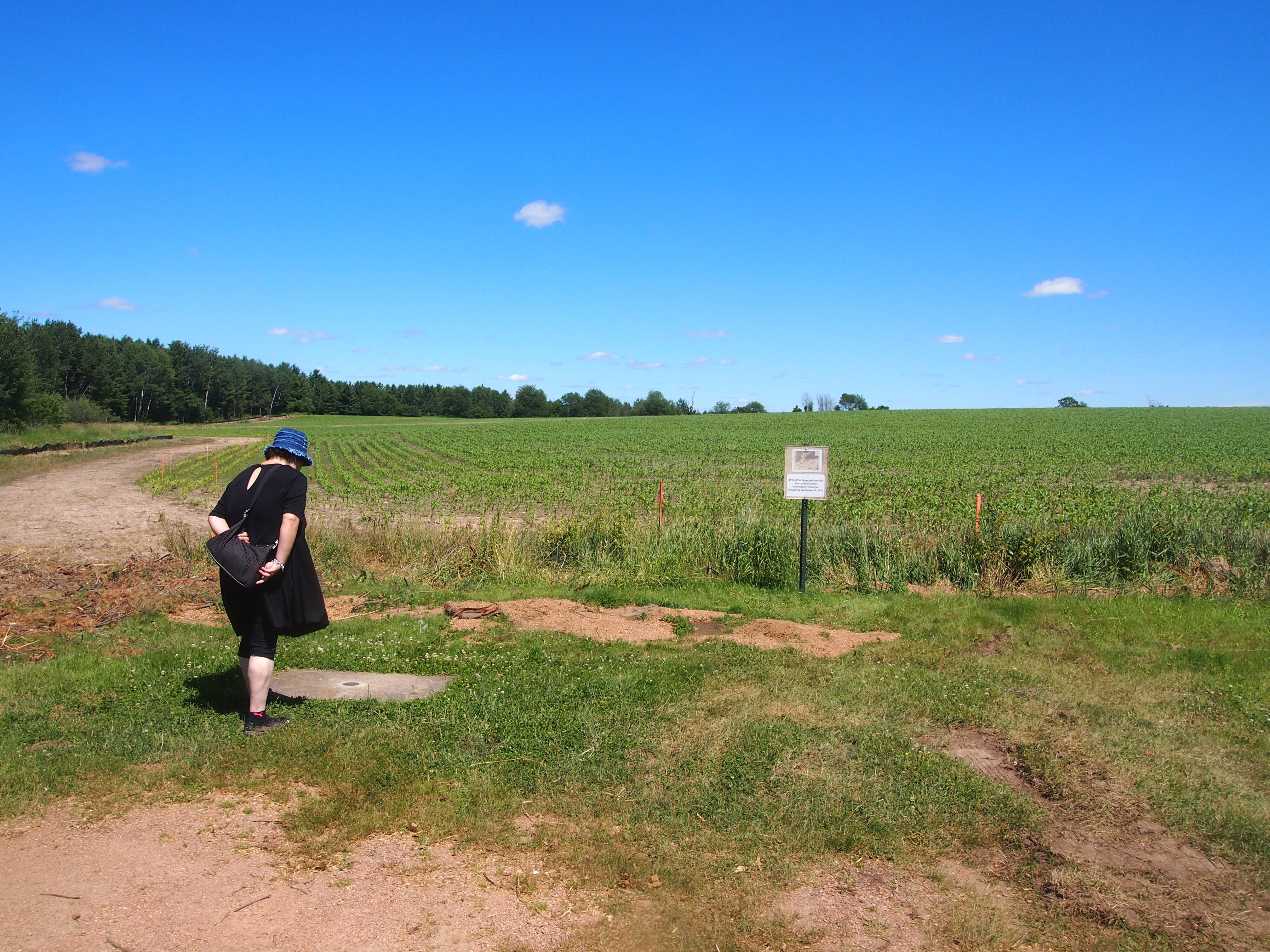
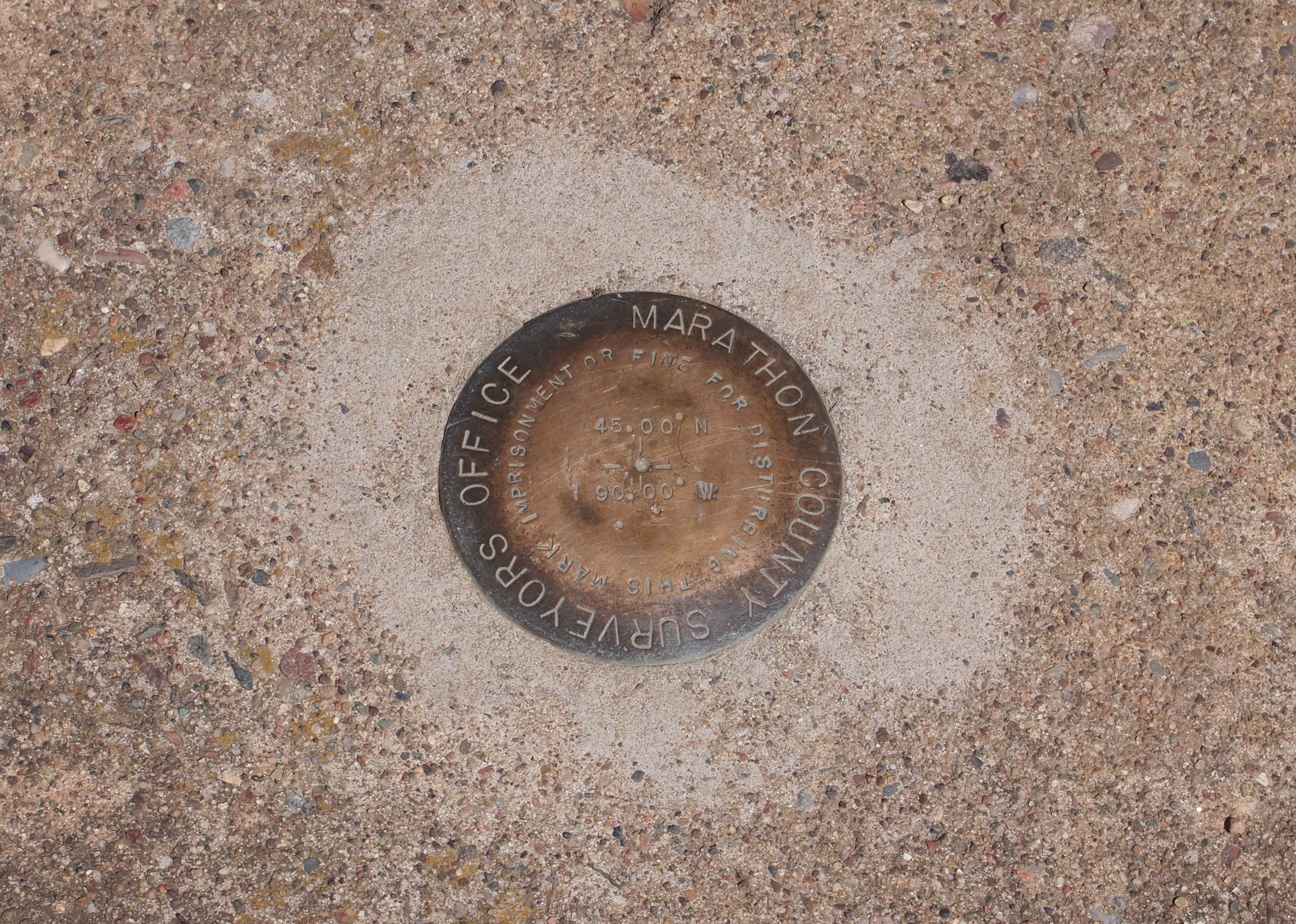 It might not be exactly 45°N, 90°W, but I wasn’t about to not stand at the point. Yuriko and Ann did too, in their turn. By now everyone was game.
It might not be exactly 45°N, 90°W, but I wasn’t about to not stand at the point. Yuriko and Ann did too, in their turn. By now everyone was game.
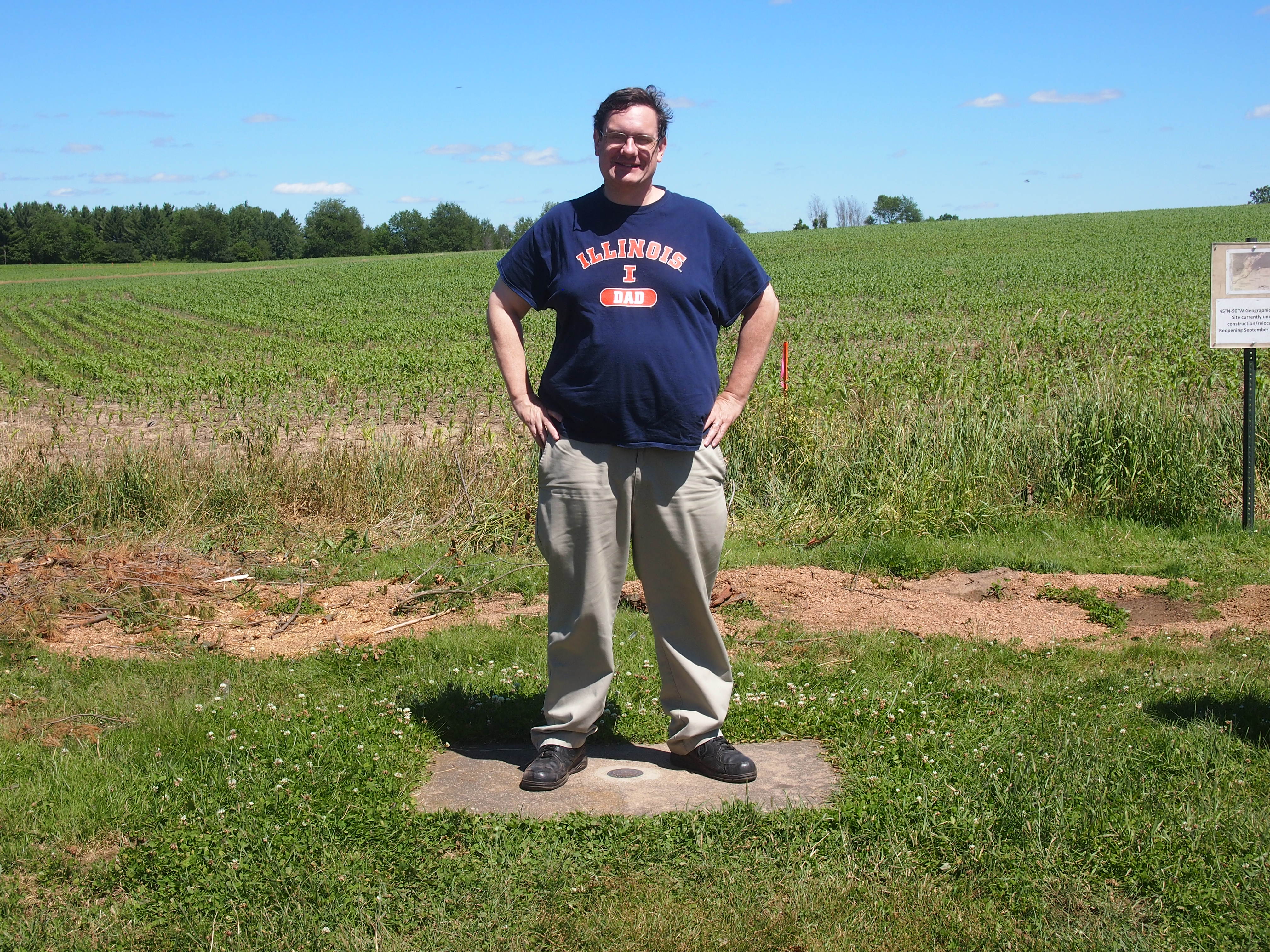 The small temporary sign near the marker, to the right of me in the picture, was erected by Marathon County. It says:
The small temporary sign near the marker, to the right of me in the picture, was erected by Marathon County. It says:
45°N-90°W Geographic Marker
Site currently under
construction/relocation
Reopening September 12, 2017
There’s also a helpful map of the planned new site fixed to the temporary sign. The old site will be a small parking lot, with a path, or maybe a paved path, leading to the new and presumably GPS-correct marker.
On July 2, work had already started on the path.
 We didn’t walk the 1,000 or so feet to the new site. If we’re ever back this way — and this part of central Wisconsin would make a good long weekend someday — we’ll surely take a look at the new marker.
We didn’t walk the 1,000 or so feet to the new site. If we’re ever back this way — and this part of central Wisconsin would make a good long weekend someday — we’ll surely take a look at the new marker.
You could think of it as a ridiculous tourist attraction, considering how arbitrary it is. After all, the Prime Meridian would be running through Paris had the French had their way — 2°20′14.03″ to the east, which would put 45°N, 90°W pretty close to, or even in, Green Bay. The body of water, not the town. I’m not going to figure it out exactly, though.
Somehow, I like the arbitrariness. It also reminds me that I’d like to visit Four Corners, too, which is even more arbitrary.
